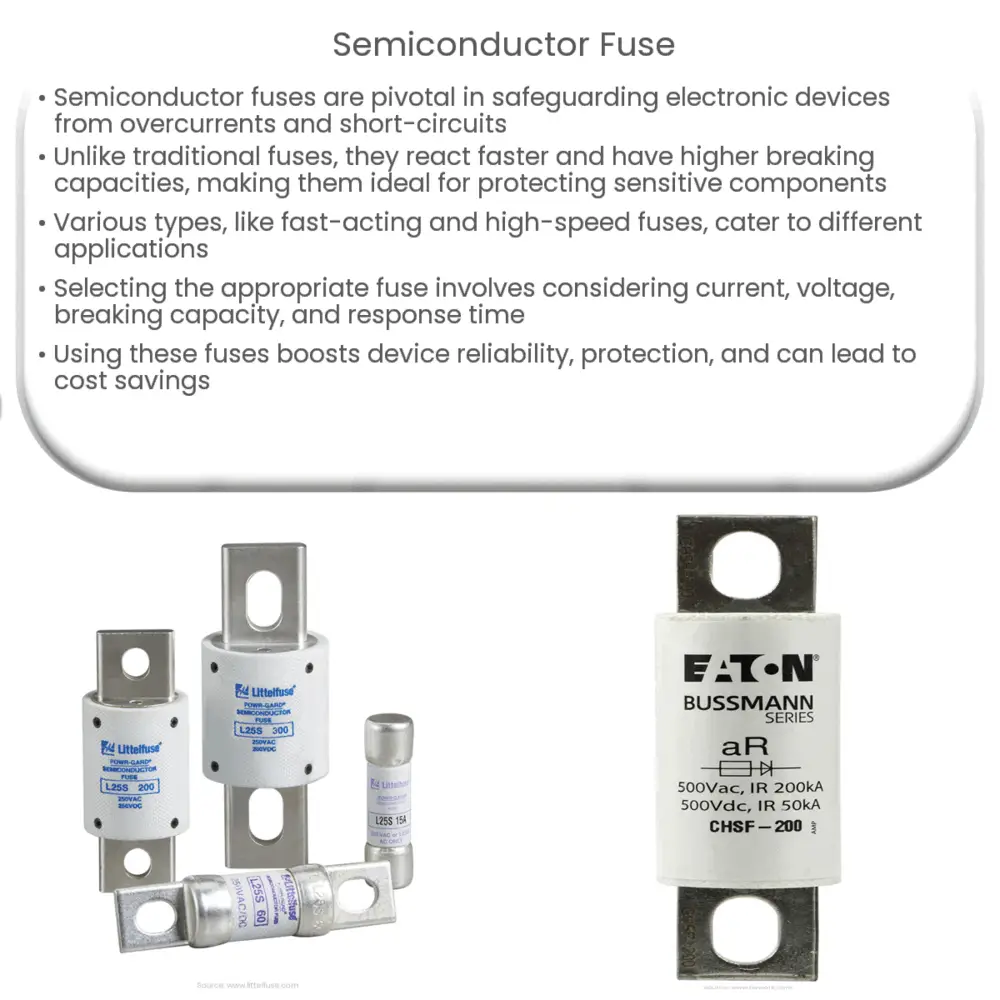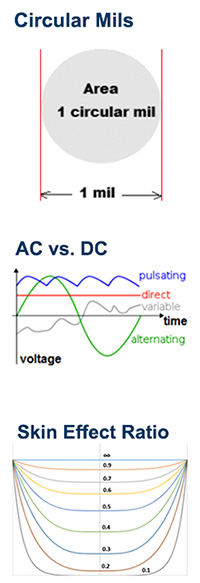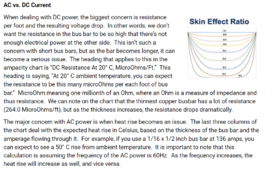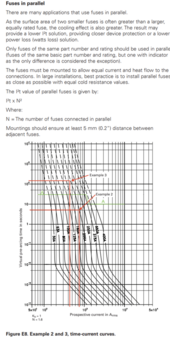I'm headed that way. From reading this thread over last 2 days, I have a lot of work to do! I plan to make room for metal box over both fuse and contactor for both batteries. That area is tight and gets to 85f while room is 78f. Top of Sol-Ark is 95f. Hottest point anywhere is Shunt bolt @ 90f.The stress from that hanging wire on that fuse is not a good thing. Why not have it mounted to the surface in a fuse holder?
You are using an out of date browser. It may not display this or other websites correctly.
You should upgrade or use an alternative browser.
You should upgrade or use an alternative browser.
House burned down
- Thread starter Jejochen
- Start date
All your individual fuses are a great safety from cell shorting out.Great thread for DIY education! I'm probably the worst setup regarding safety of any with my build. I am running 14s100p 18650s fused with the tiny wires on each cell. I just added 16s lifeP04 280ah string. I only go to 3.45v on charging which is 52.1v. I have limit of 80amps on charging 70amps discharging with Sol-Ark 8K. These batteries are in parallel. 8kwh PV total. I power 10 circuit transfer box. Biggest draw is 900watt 120v split air AC. Coffee make about 2700 watts, but only last for less than a minute. Air fryer is next biggest load almost 15amps @ 2900 watts.
Sol-Ark is mounted on 3/4" plywood. 18650s are mounted on metal sheet bolted to 3/4" plywood. LifeP04s on shelf rated for 400lbs. It is on wheels but I don't move it. I made plexiglass covers for each 8 cell section. Barley paper for separators and clamped at charge of 3.36v lightly.
No one on this thread spoke to the OP going above 3.55v per cell??
I agree with UN&P that fuse needs a holder.
robbob2112
Doing more research, mosty harmless
Great thread for DIY education! I'm probably the worst setup regarding safety of any with my build. I am running 14s100p 18650s fused with the tiny wires on each cell. I just added 16s lifeP04 280ah string. I only go to 3.45v on charging which is 52.1v. I have limit of 80amps on charging 70amps discharging with Sol-Ark 8K. These batteries are in parallel. 8kwh PV total. I power 10 circuit transfer box. Biggest draw is 900watt 120v split air AC. Coffee make about 2700 watts, but only last for less than a minute. Air fryer is next biggest load almost 15amps @ 2900 watts.
Sol-Ark is mounted on 3/4" plywood. 18650s are mounted on metal sheet bolted to 3/4" plywood. LifeP04s on shelf rated for 400lbs. It is on wheels but I don't move it. I made plexiglass covers for each 8 cell section. Barley paper for separators and clamped at charge of 3.36v lightly.
No one on this thread spoke to the OP going above 3.55v per cell??
I was wrong and corrected.
Last edited:
Hedges
I See Electromagnetic Fields!
- Joined
- Mar 28, 2020
- Messages
- 21,052
That's called HF start. It sends high voltage pulse (few kV) through the torch to start the arc without tip touching the work piece. Is activated by trigger button on the torch or using lift start function.
technically you are correct, but I have a miller dynasty 200 and I have rarely needed to use the high frequency start and I never use the touch and lift start... too easy to contaminate your electrode that way. pedal or finger trigger, I ramp the voltage up, it jumps and I lower the voltage down.
OK, so no claim that 12V or whatever can jump 1/8".
That was the original disagreement we were discussing - whether a screwdriver could draw an arc from a 12V car battery without having ever come in contact.
ok I have only welded for about 40+ years at this point in my life. when using DC current for welding the object is to start the arc without touching the base metal. professional welders do that all the time. beginners drag the electrode across the base metal to start the current flowing.
Guilty as charged. But my welder is an AC buzz box, a 3:1 step-down transformer with movable core.
Is there anything I can do which is better than dragging the flux-coated stick across my workpiece?
They are basically a mosfet with trigger circuit
That's not what a semiconductor fuse is though. A semiconductor fuse is named as such because it's designed to protect electronic equipment (such as inverters). They're essentially really fast fuses, but don't contain electronics themselves.
Bluedog225
Texas
- Joined
- Nov 18, 2019
- Messages
- 3,041
Wow. Agree. No.The stress from that hanging wire on that fuse is not a good thing. Why not have it mounted to the surface in a fuse holder?
Hedges
I See Electromagnetic Fields!
- Joined
- Mar 28, 2020
- Messages
- 21,052
You do realize the fuse in your second picture appears to be a semicondutor fuse verse a standard class T. They are basically a mosfet with trigger circuit and not the same thing as all. Best used just before equipment verse main battery fuse. I could be wrong without being able to see the numbers on the casing, but that is what it looks like.
I don't believe a Semiconductor fuse is a circuit made from semiconductors.
Just fast fuse material.
Semiconductor fuse | How it works, Application & Advantages
A semiconductor fuse is a fast-acting, compact protective device designed to safeguard sensitive electronic components from overcurrents and short circuits.
 www.electricity-magnetism.org
www.electricity-magnetism.org
Semiconductor Fuses - High Speed Fuses - Littelfuse
Are your Girl Scout cookies made with real Girl Scouts?
If corn oil is made from corn...I don't believe a Semiconductor fuse is a circuit made from semiconductors.
Just fast fuse material.

Semiconductor fuse | How it works, Application & Advantages
A semiconductor fuse is a fast-acting, compact protective device designed to safeguard sensitive electronic components from overcurrents and short circuits.www.electricity-magnetism.org
Semiconductor Fuses - High Speed Fuses - Littelfuse
www.littelfuse.com
Are your Girl Scout cookies made with real Girl Scouts?
...What is baby oil made from?
robbob2112
Doing more research, mosty harmless
Thanks for the correction - I have learned my one new thing for the day and need to go back to bed before I learn anything else.If corn oil is made from corn...
...What is baby oil made from?

For everyone else here is the link to how they work and page 8 has some good info. And the quenching material is sifted quartz, so quartz sand verse straight silica sand, i.e. both are silicone dioxide but quartz has a little bit of impurity and it and is cheaper.
High speed fuses are primarily for protecting semiconductors fromshort-circuits. Their high operating temperatures often restrict usingelement alloys with a lower melting temperature to assist with overloadoperation. The result is that high speed fuses are generally not “fullrange” (operate on short-circuit and overload conditions) and have morelimited capability to protect against low-level overcurrent conditions

OH NO! I learned something else, I may have faint from shock.
This concerns bus bars - for longer bus bars it is better to go thicker than wider.

Understanding Bus Bar Ampacity Charts
A brief overview of ampacity charts for both copper and aluminum busbar and how to interpret the data within.
 stormpowercomponents.com
stormpowercomponents.com

Last edited:
Daddy Tanuki
Solar Wizard
absolutely clean surface, rust free, paint and corrosion free, if you are using standard US rods say 60xx 10, 11, 13 or any of the 70xx series match the thickness of the rods to what you are welding.Guilty as charged. But my welder is an AC buzz box, a 3:1 step-down transformer with movable core.
Is there anything I can do which is better than dragging the flux-coated stick across my workpiece?
Too many folks just grab whatever is available and are normally welding on material with the wrong size rods. required amps change with rod diameter and do you really need to be welding with a 1/8 rod? I mean if you are welding something thicker than 10mm Ok...
change from scratch to tap. then after practicing a bit you will notice that if the rod is new, the surface is clean right before the rod contacts the surface an arc will start to form... practice until you can stop the tip right at that point without actually touching the surface. practice makes perfect. I only weld on less than 10% of the various contracts I bid on, but the navy is spasmodically anal about welds. leave it at that.
robbob2112
Doing more research, mosty harmless
I only weld on less than 10% of the various contracts I bid on, but the navy is spasmodically anal about welds. leave it at that.
The only two things probably more critical and anal would be doing hot taps on gas lines and cooling lines for nuclear reactors.
Not sure, but this is the link: https://www.amazon.com/dp/B0BQZ83SVM?ref=ppx_yo2ov_dt_b_product_details&th=1You do realize the fuse in your second picture appears to be a semicondutor fuse verse a standard class T. They are basically a mosfet with trigger circuit and not the same thing as all. Best used just before equipment verse main battery fuse. I could be wrong without being able to see the numbers on the casing, but that is what it looks like.
Zwy
Emperor Of Solar
Interesting first review on that page.....Not sure, but this is the link: https://www.amazon.com/dp/B0BQZ83SVM?ref=ppx_yo2ov_dt_b_product_details&th=1
robbob2112
Doing more research, mosty harmless
Not sure, but this is the link: https://www.amazon.com/dp/B0BQZ83SVM?ref=ppx_yo2ov_dt_b_product_details&th=1
I was wrong, those are fine other than not being mounted in a fuse holder.
Ampster
Renewable Energy Hobbyist
That is clearly a Class T fuse.Not sure, but this is the link
robbob2112
Doing more research, mosty harmless
Great thread for DIY education! I'm probably the worst setup regarding safety of any with my build. I am running 14s100p 18650s fused with the tiny wires on each cell. I just added 16s lifeP04 280ah string. I only go to 3.45v on charging which is 52.1v. I have limit of 80amps on charging 70amps discharging with Sol-Ark 8K. These batteries are in parallel. 8kwh PV total. I power 10 circuit transfer box. Biggest draw is 900watt 120v split air AC. Coffee make about 2700 watts, but only last for less than a minute. Air fryer is next biggest load almost 15amps @ 2900 watts.
Sol-Ark is mounted on 3/4" plywood. 18650s are mounted on metal sheet bolted to 3/4" plywood. LifeP04s on shelf rated for 400lbs. It is on wheels but I don't move it. I made plexiglass covers for each 8 cell section. Barley paper for separators and clamped at charge of 3.36v lightly.
No one on this thread spoke to the OP going above 3.55v per cell??
Post in thread 'House burned down'
https://diysolarforum.com/threads/house-burned-down.83098/post-1086961
Stated 3.45 v as seen and read. It stopped my runner The victron treats these cells as if brand new. The UL1974 basically talks about repurposing cell from auto and such. But it is a requirement to be UL compliant. Guess they-govt don’t want ppl buying new cells.
The voltage was addressed. Ppl can do as they wish. What comes comes results often prove points. Why this particular Up in Smoke forum exists….. Cheech and Chong movie
_voltmeter_
New Member
- Joined
- Apr 24, 2022
- Messages
- 56
dont think it can melt because lfp does not burn hot enough. different story with nmc or lipobut now I'm questioning if the steel would just melt....
but if the shelf is out of thin metal with no insulation it can collapse because hot steel is not stable enough.
Similar threads
- Replies
- 90
- Views
- 10K
- Replies
- 12
- Views
- 862



